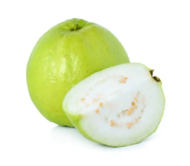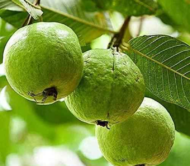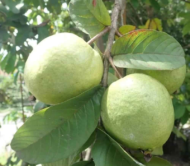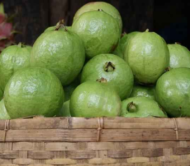-94%








₹320.00 ₹20.00
Details:
| Parameter | Details |
|---|---|
| Fruit Skin Color | Light green to pale yellow when ripe |
| Flesh Color | White, smooth and soft |
| Taste | Mildly sweet, low acidity, pleasant |
| Sweetness | Moderate, slightly less than L-49 |
| TSS / Brix | 9–11° Brix (Total Soluble Solids – indicates natural sugar content) |
| Fruit Weight | 150–300 grams per fruit |
| Texture | Very soft, creamy, and juicy pulp |
| Seeds | Medium to high, soft and edible |
| Shelf Life | Short (2–4 days) – not ideal for long transport |
2499 in stock
Here is a complete overview of the Allahabad Guava (also known as Allahabad Safeda Guava) including its description and cultivation practices:
The Allahabad Safeda is one of the oldest and most popular guava varieties in India, especially known for its smooth texture, soft pulp, and high market demand.
| Attribute | Details |
|---|---|
| Fruit Skin Color | Pale green to light yellow when ripe |
| Flesh Color | Pure white, smooth and soft |
| Fruit Weight | 150–300 grams per fruit |
| Shape | Round to slightly oval |
| Taste | Mildly sweet, soft, and creamy |
| Sweetness (TSS) | 9–11° Brix |
| Seeds | Medium to high, but soft and edible |
| Aroma | Pleasant and delicate |
| Texture | Smooth, very soft pulp |
| Shelf Life | Short – 2–4 days (less suitable for distant transport) |
| Factor | Ideal |
|---|---|
| Soil Type | Sandy loam, loam, or alluvial soil |
| pH Range | 6.0–7.5 |
| Drainage | Well-drained, avoid waterlogging |
| Parameter | Recommendation |
|---|---|
| Spacing | 6 x 6 m or 5 x 5 m (275–400 plants/acre) |
| Planting Season | June–August or February–March |
| Propagation | Grafted or air-layered plants preferred |
| Tree Age | FYM (kg/tree/year) | NPK (g/tree/year) |
|---|---|---|
| 1 year | 10–15 | 250:150:150 |
| 2–3 yrs | 20–25 | 500:300:300 |
| Mature | 25–30 | 1000:500:500 |
| Problem | Management |
|---|---|
| Fruit Fly | Traps, neem oil sprays |
| Guava Wilt | Soil drenching with fungicides |
| Anthracnose | Copper-based fungicide sprays |
| Component | Estimate |
|---|---|
| Plants per Acre | 300–400 |
| Yield (mature tree) | 25–40 kg/tree/year |
| Total Yield | 8–15 tons per acre annually |
| Market Price | ₹15–25/kg (higher in off-season) |
| Gross Income | ₹2.5–5 lakhs/year |
| Net Profit | ₹1.5–3.5 lakhs/year (after expenses) |
| Feature | Details |
|---|---|
| Variety Name | Allahabad Safeda Guava |
| Skin Color | Light green to pale yellow |
| Flesh Color | White, soft, smooth |
| Taste | Mildly sweet, low acidity |
| Sweetness (TSS) | 9–11° Brix |
| Weight | 150–300 grams |
| Shelf Life | Short (2–4 days) |
| Best Use | Fresh market, juice, pulp |
Would you like an Excel-based cultivation plan, profit comparison with L-49 or VNR Bihi, or a side-by-side table of different guava types?
No account yet?
Create an Account
Reviews
Clear filtersThere are no reviews yet.